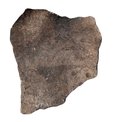Motif 1: A.D. 575-650
Not Further Specified
Not Further Specified
|
5MT3.d *
University of Colorado Museum of Natural History |
5MT2525.211b * 5MT9168.83 * 5MT9168.794.b
Anasazi Heritage Center, Bureau of Land Management |
|
5MT10647.317.5 * 5MT10647.1092.2
Crow Canyon Archaeological Center |
5MT12205.526 5MT12205.532 *
Anasazi Heritage Center, Bureau of Land Management |
5MV1285.256.2/3.l * 5MV1285.256.2/3.k * 5MV1285.256.1/3.b * 5MV1285.32903 *
National Park Service, Mesa Verde National Park
National Park Service, Mesa Verde National Park
LA2507.3140.8 * LA2507.18363 g * LA2507.2275.e *
Collections of the Navajo Nation, Museum of Indian Arts & Culture, Laboratory of Anthropology
Collections of the Navajo Nation, Museum of Indian Arts & Culture, Laboratory of Anthropology
|
LA80422.3256.14.1 LA80422.3035.16
Collections of the Navajo Nation Museum of Indian Arts & Culture, Laboratory of Anthropology |
42SA8821.502 * 42SA8543.328
Natural History Museum of Utah |
Twenty bowls are represented here: 12 from Montezuma County, Colorado, one from San Juan County and six from McKinley County, New Mexico, and one from San Juan County, Utah. In the author's opinion, 13 of these, indicated by an *, are good candidates for being Joined form motifs. Even discounting half of these, this would still put Joined as the second most common form for this period.



















